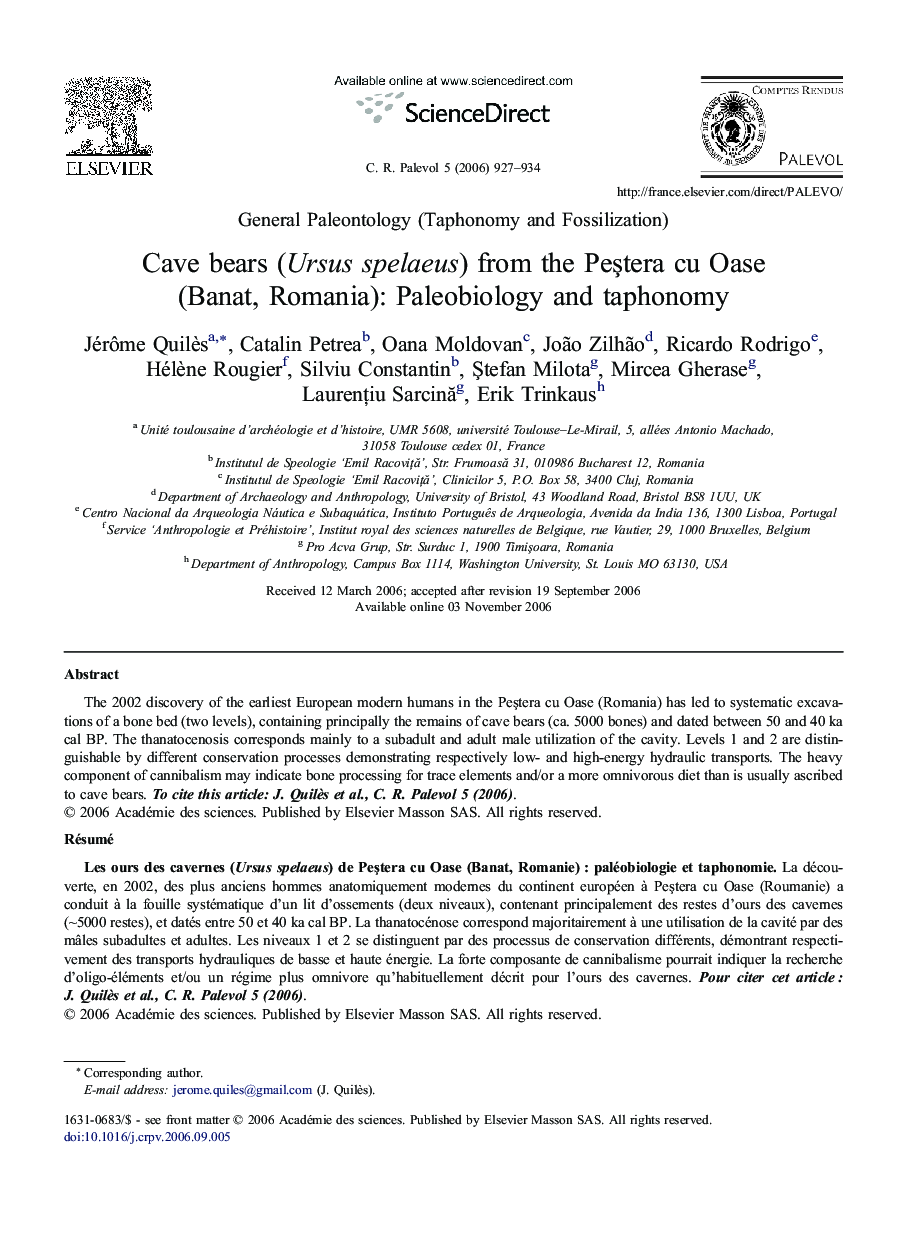| Article ID | Journal | Published Year | Pages | File Type |
|---|---|---|---|---|
| 4746405 | Comptes Rendus Palevol | 2006 | 8 Pages |
The 2002 discovery of the earliest European modern humans in the Peştera cu Oase (Romania) has led to systematic excavations of a bone bed (two levels), containing principally the remains of cave bears (ca. 5000 bones) and dated between 50 and 40 ka cal BP. The thanatocenosis corresponds mainly to a subadult and adult male utilization of the cavity. Levels 1 and 2 are distinguishable by different conservation processes demonstrating respectively low- and high-energy hydraulic transports. The heavy component of cannibalism may indicate bone processing for trace elements and/or a more omnivorous diet than is usually ascribed to cave bears. To cite this article: J. Quilès et al., C. R. Palevol 5 (2006).
RésuméLes ours des cavernes (Ursus spelaeus) de Peştera cu Oase (Banat, Romanie) : paléobiologie et taphonomie. La découverte, en 2002, des plus anciens hommes anatomiquement modernes du continent européen à Peştera cu Oase (Roumanie) a conduit à la fouille systématique d'un lit d'ossements (deux niveaux), contenant principalement des restes d'ours des cavernes (~5000 restes), et datés entre 50 et 40 ka cal BP. La thanatocénose correspond majoritairement à une utilisation de la cavité par des mâles subadultes et adultes. Les niveaux 1 et 2 se distinguent par des processus de conservation différents, démontrant respectivement des transports hydrauliques de basse et haute énergie. La forte composante de cannibalisme pourrait indiquer la recherche d'oligo-éléments et/ou un régime plus omnivore qu'habituellement décrit pour l'ours des cavernes. Pour citer cet article : J. Quilès et al., C. R. Palevol 5 (2006).
